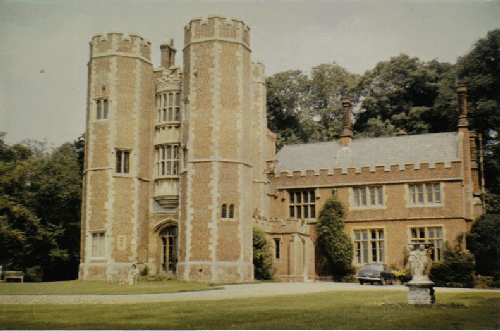The memorial cross
In 1921 at the junction of Kirtling with the hamlet of Upend, as a memorial to the men of the parish who died in the First World War, a cross of Dartmoor granite was erected.
Kirtling Towers
After a famine in 1005 the holding of Kirtling at that time, a fortified castle and its land, was given to Earl Harold, later King of England, by his father Earl Godwin.
After the conquest William the first gave the manor of Kirtling to his niece, Countess Judith and her husband, who was a son of the Earl of Northumbria. Their daughter, also called Judith, married a Ralph De Tony who was the son of a Norman standard bearer of the King who came over during the invasion.
Their grandson, also Ralph, died at sea in 1241. His wife Petronilla was given a grant of £46.10.4d and allowed to continue to hold the land until Ralph’s heir became of age. Petronilla died and Queen Eleanor was given custody of the De Tony land until the heir became of age. Henry of Hastings captured Kirtling castle from Robert De Tony, Petronilla’s grandson in 1264.
The following year the King and the Earl of Gloucester fought back victoriously and the village was then given to the Earl’s mother, Countess Matilda. By 1284, however, Robert De Tony was returned to hold Kirtling ( then known as Kertlynge) by the King. He held a tenancy in return for some duty he did for the King.
After several generations it was purchased by Sir Edward North in 1530. He was the only son of Roger North, a merchant of London. He had been educated at Peter House College, Cambridge, later entering the Inns of Court, and was called to the bar. He married a rich heiress, Alice Bockenden. This gave him enough money to buy Kirtling estate and build a fine hall on the site of the castle.
Next: Part 9

